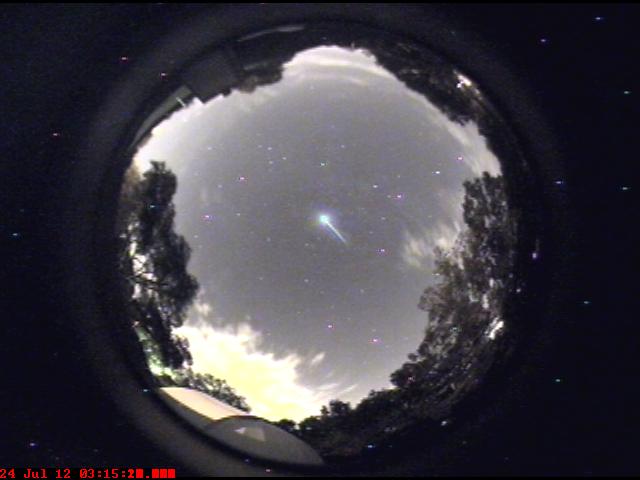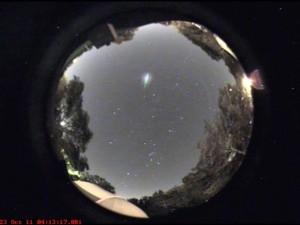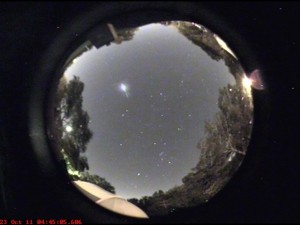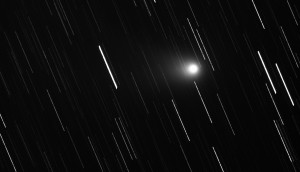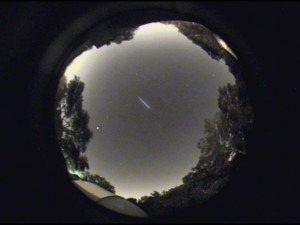Fortunately, enough of the observatory is back on line after the lightning strike to capture a meteor this morning. Tracing the path back along the sky, the meteor’s course appears to be too far west for it to be a Capricornid or a Delta Aquarid. Both showers peak this weekend but it is not uncommon for there to be early and late arrivals. Meteor showers usually last several days with the counts slowly building to a peak and then tapering off.
Meteors that are not identified with a known shower are known as sporadic meteors.
I have a couple of motion detection packages, the one with the best detection algorithm is not sophisticated enough to allow dark frame subtraction. That is the cause of all the ‘stars’ that can be seen in the area around the circular FOV. The hot pixels are not limited to the surrounding area; there are quite a few claiming membership in the visible constellations. Luckily, they do not interfere with motion detection.
